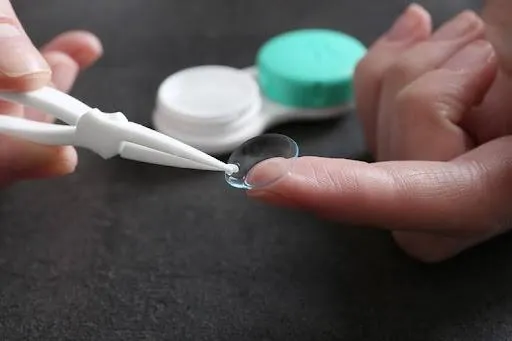Ortho-K Care
Ortho-K Safety for Kids: Essential Tips
FSDAVCFEBFEVSDDVFSD
FSDAVCFEBFEVSDDVFSD
FSDAVCFEBFEVSDDVFSD
Clean Hands, Safe Lenses
Begin by washing hands with non-moisturizing soap, rinsing thoroughly, and air-drying completely—never use lotions before handling lenses. Use only lint-free towels to prevent fiber transfer, and keep fingernails trimmed to reduce the risk of damaging lenses or scratching eyes. Establish a dedicated “clean zone” at the sink: label all solution bottles clearly, store them upright, and never allow lenses or cases to contact tap water, which can introduce harmful organisms and lead to corneal infection.
Each night, do a one-minute pre-bed check: confirm all supplies are present, towels are clean, and bottles are unexpired. These habits ensure safe, stress-free mornings.
Begin by washing hands with non-moisturizing soap, rinsing thoroughly, and air-drying completely—never use lotions before handling lenses. Use only lint-free towels to prevent fiber transfer, and keep fingernails trimmed to reduce the risk of damaging lenses or scratching eyes. Establish a dedicated “clean zone” at the sink: label all solution bottles clearly, store them upright, and never allow lenses or cases to contact tap water, which can introduce harmful organisms and lead to corneal infection.

Each night, do a one-minute pre-bed check: confirm all supplies are present, towels are clean, and bottles are unexpired. These habits ensure safe, stress-free mornings.

Insertion, Removal, and Case Care
Build a bubble-free insertion routine by first cleaning and conditioning your overnight Ortho-K lenses with proper hygiene. Fill the lens bowl completely to the rim with preservative-free saline solution. Gently center the lens on the eye and check for comfort. If you notice any stinging or see a bubble, remove the lens immediately, refill it, and reinsert—never force insertion through discomfort or irritation. Proper insertion helps maintain comfort and effectiveness throughout the night.
In the morning, use a clean suction plunger along with gentle eyelid control to remove the lenses. After removal, always rinse the lenses with an approved cleaning solution—never use tap water, as it can introduce harmful microorganisms. Empty the lens case daily, rinse it with disinfecting solution, and leave it to air-dry face-down on a clean surface. For proper disinfection, replace the contact lens case at least once a month.
Parents should perform a weekly spot-check to ensure proper technique and verify that products being used are authentic and within expiration. Posting a step-by-step routine card near the mirror can help reinforce correct habits, especially during school nights, travel, or sleepovers when routines are more easily disrupted.
Red Flags and Rapid Response

Build a bubble-free insertion routine and stay alert for red flags. If your child experiences persistent pain, redness, light sensitivity, discharge, or sudden blurry vision, stop lens wear immediately and contact your Houston eye clinic the same day. Bring the lenses, storage case, and all solutions to the appointment so the care team can identify the cause and take steps toward corneal infection prevention. Timely action is essential to protect your child’s eye health.
If lens comfort dips but redness is mild or absent, clean the lens thoroughly with fresh saline and attempt reinsertion once.

However, if discomfort continues, redness worsens, or vision remains blurry, stop wearing the lenses and consult the clinic before resuming. Recognizing and acting on these Ortho-K warning signs early plays a critical role in protecting your child’s corneas and ensuring safe, long-term success in pediatric myopia control.
Build a bubble-free insertion routine and stay attentive during routine disruptions such as illness, exam weeks, late practices, or increased screen time. These changes can affect lens performance and eye comfort, so inspect your child’s eyes more closely or schedule a review with your eye care provider at Kleinwood Vision if needed. Maintain a simple two-line daily log tracking comfort and clarity each night. This helps differentiate occasional off nights from patterns that may signal a need for adjustment or follow-up care.
In pediatric myopia control, the primary goal is slowing axial eye growth, not necessarily achieving perfect vision every day. A small shift in your child’s glasses prescription doesn’t mean the treatment isn’t working. Always prioritize long-term safety and corneal health over minor, temporary vision fluctuations. Reinforcing this perspective helps set realistic expectations for both parents and children while supporting the consistent, safe use of Ortho-K lenses for effective myopia management.
Follow-Ups That Protect Your Vision
Younger children or fast progressors typically visit the clinic every six months for thorough check-ups, while teens with stable results may extend visits to twelve months. Each follow-up includes detailed biometrics, corneal health assessments, and a review of your home hygiene and solution use to ensure proper overnight lenses hygiene. These regular visits are essential for monitoring treatment progress and maintaining eye health during Ortho-K therapy.
If topographic maps show lens decentration or if your child experiences discomfort that limits wear time, your doctor will adjust the lens parameters promptly. Making these refinements before performance declines helps maintain the reshaping effect of the lenses and protects vision over time. Timely follow-ups and adjustments are critical to achieving long-term success in pediatric myopia control and ensuring your child’s eyes remain healthy and comfortable throughout treatment.
Family Routines That Really Stick Together
Night routine: Always wash and dry hands thoroughly before handling lenses. Clean and condition the lenses carefully, then fill the lens bowl with sterile saline. Insert the lenses gently, making sure there are no bubbles for optimal comfort and safety.
In the morning, remove the lenses using a clean plunger, rinse them with an approved solution, and then empty, rinse, and air-dry the contact lens case. Logging your child’s comfort and clarity each day helps track how well the lenses are working.
Night routine: Always wash and dry hands thoroughly before handling lenses. Clean and condition the lenses carefully, then fill the lens bowl with sterile saline. Insert the lenses gently, making sure there are no bubbles for optimal comfort and safety.
In the morning, remove the lenses using a clean plunger, rinse them with an approved solution, and then empty, rinse, and air-dry the contact lens case. Logging your child’s comfort and clarity each day helps track how well the lenses are working.

Weekly maintenance includes replacing towels, checking solution expiration dates, and spot-reviewing insertion and removal techniques. These quick audits help catch small issues early and play a crucial role in supporting Ortho-K safety for kids, ensuring effective and safe pediatric myopia control.

Weekly maintenance includes replacing towels, checking solution expiration dates, and spot-reviewing insertion and removal techniques. These quick audits help catch small issues early and play a crucial role in supporting Ortho-K safety for kids, ensuring effective and safe pediatric myopia control.
Travel, School, and Sleepovers Tips
When preparing for travel, school events, or sleepovers, pack a labeled kit with all essential Ortho-K supplies. Include sterile saline vials, lens cleaner and conditioner, spare plungers, a compact mirror, tissues, and backup glasses. Store all liquids upright to prevent leaks and preserve sterility. Having a dedicated, organized kit makes it easier for your child to follow proper overnight lenses hygiene, even when away from home.
For school trips or camps, add a simple routine card with step-by-step instructions for insertion and removal. This visual reminder reinforces correct habits and offers guidance during unfamiliar settings. Inform counselors or chaperones about your child’s Ortho-K routine so they can offer support if needed. Encourage lens insertion during calm, well-lit moments—never in a rush or chaotic environment where mistakes are more likely to occur.
If a lens is dropped late at night, use backup glasses and call your Houston eye clinic the next day. Never rinse the lens with tap water or attempt to “make up” for missed wear. Preserving safety and corneal health is far more important than a single night of treatment. Proper response prevents complications and supports long-term success.
Before any major travel or active sports season, schedule a quick check-up to confirm proper lens centration and ensure your supplies are up to date. These small, proactive steps help maintain consistent safety. With portable routines and the right preparation, your child can keep up with Ortho-K treatment confidently, wherever they go—ensuring effective care during travel, school, and sleepovers.
Parent & Teen FAQs Answered Clearly
Can kids nap while wearing Ortho-K? Short, upright naps are generally safer than side-sleeping naps, which can cause lens decentration. Always check with your clinician before allowing naps while wearing Ortho-K lenses to ensure safety and comfort.
What if saline runs out? Only use approved sterile saline for your child’s lenses. Never substitute with tap water or soft-lens multipurpose solutions, as these can introduce harmful microbes and damage the lenses.

Can kids nap while wearing Ortho-K? Short, upright naps are generally safer than side-sleeping naps, which can cause lens decentration. Always check with your clinician before allowing naps while wearing Ortho-K lenses to ensure safety and comfort.
What if saline runs out? Only use approved sterile saline for your child’s lenses. Never substitute with tap water or soft-lens multipurpose solutions, as these can introduce harmful microbes and damage the lenses.
How long do lenses last? The lifespan depends on your child’s lens care and fit. It’s important to bring lenses to every appointment so your eye care provider can inspect them for scratches, warping, or protein buildup. What if your child wakes uncomfortable at 3 a.m.? Gently remove the lens, clean it, refill with fresh saline, and reinsert. If discomfort continues, call the clinic for advice to avoid irritation or injury.
How long do lenses last? The lifespan depends on your child’s lens care and fit. It’s important to bring lenses to every appointment so your eye care provider can inspect them for scratches, warping, or protein buildup. What if your child wakes uncomfortable at 3 a.m.? Gently remove the lens, clean it, refill with fresh saline, and reinsert. If discomfort continues, call the clinic for advice to avoid irritation or injury.
Safety Checklist to Print and Use
Post the “pause‑protect‑call” rule, red flags, nightly and morning steps, and your clinic’s number near the mirror where lens care happens. This safety checklist reinforces routines and supports your child’s independence. Keep backup glasses in a known, easy-to-reach spot in case of lens issues. Set evening device timers to reduce screen time and protect sleep, which is important for overnight lenses hygiene and myopia control success.
If your child experiences a dip in comfort or clarity for three nights in a row, don’t try to troubleshoot alone—contact us at Kleinwood Vision. Bring your daily comfort and clarity logs, along with all lens supplies, to your visit. Early intervention prevents harm, protects vision, and ensures pediatric myopia control continues safely. Being proactive with routines and communication helps your child stay safe, confident, and consistent in their Ortho-K journey.

Contact Info
Hours of Operation
Mon - Fri | 9:00 AM - 5:00 PM
Sat - Sun | Closed
Holiday Hours: We are closed for the following holidays: New Years Day, Memorial Day, Independence Day, Labor Day, Thanksgiving Day, Christmas Day
© 2025 Kleinwood Vision. All rights Reserved.


